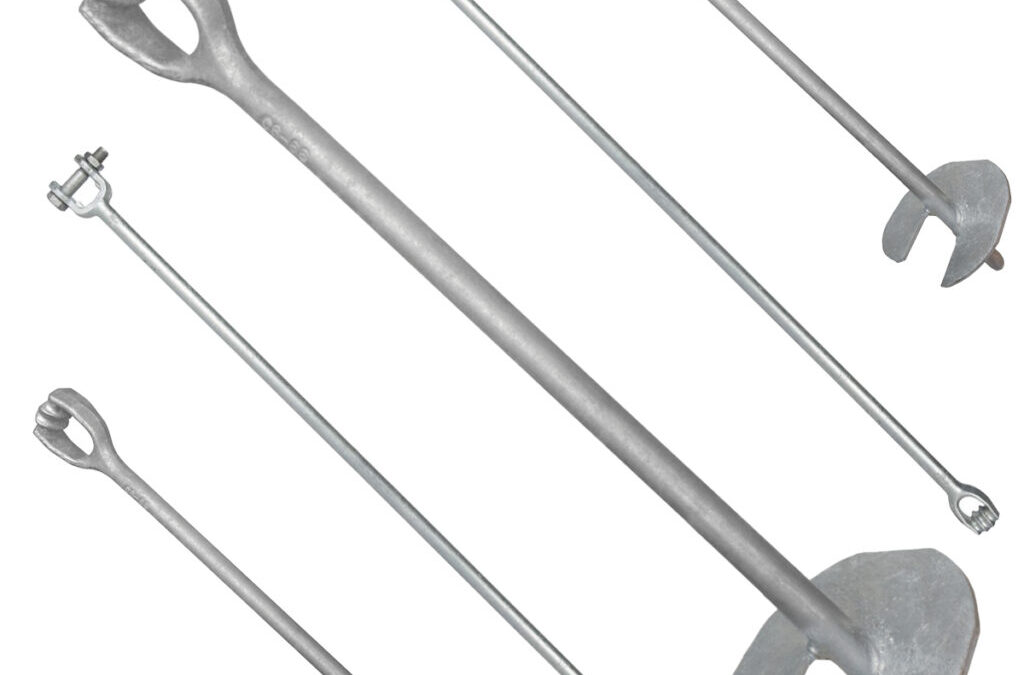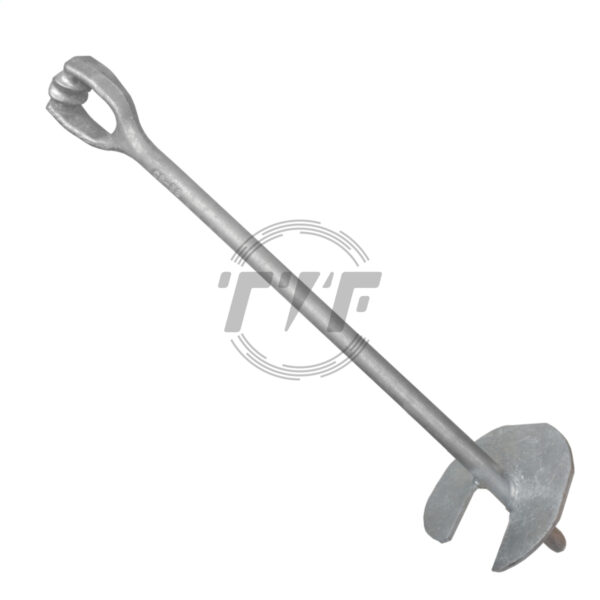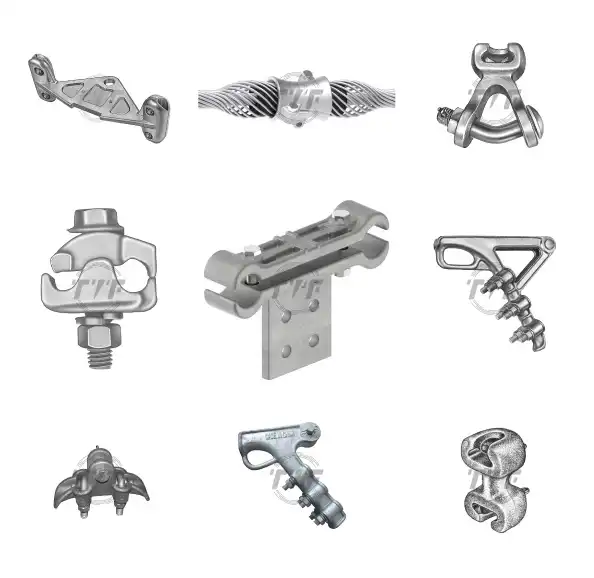A no-wrench screw anchor is a type of mechanical anchor used in power line and utility pole installations. It provides stability and support without requiring a wrench or extra tools for installation. It is also designed for quick and easy installation in concrete, masonry, and other solid base materials. No-wrench screw anchors are installed by hammering directly into a pre-drilled hole to cut the need for extra tools during the final setting page. Its design features a threaded body with an expansion mechanism that activates when hammered. Some versions have a serrated shaft to enhance grip in the hole. No-wrench screw anchors are a convenient and efficient alternative to traditional mechanical anchors that provide tool-free installation while maintaining strong holding power. They are ideal for contractors looking for a fast, reliable anchoring solution in solid substrates.
No-Wrench Screw Anchor
No wrench screw anchors are high-performance anchoring solutions designed for rapid installation in utility pole and power line construction. Engineered for direct embedment without the need for power-driven equipment, these anchors are ideal for light to medium-duty guying applications in various soil conditions. Their helical design ensures maximum holding strength with minimal ground disturbance.
Key Features:
- Tool-Free Installation: Installs with a standard rod or handle—no powered equipment required.
- Galvanized Steel Construction: Provides long-term corrosion resistance in all environments.
- Helical Blade Design: Enhances grip and soil penetration, improving holding capacity.
- Versatile Applications: Suitable for temporary or permanent guying of utility poles and overhead lines.
- Cost-Effective & Efficient: Reduces labor time and eliminates equipment rental costs.
- Multiple Rod Sizes Available: Compatible with various anchor rods and extensions.
Why use no-wrench screw anchors in power line infrastructure?
No-wrench screw anchors ensure structural integrity, safety, and ease of deployment in overhead power line construction. The anchors provide a practical, cost-effective solution to one of the most critical challenges in transmission line projects. No-wrench screw anchors provide fast and flexible installation, provide access to remote areas, and sustainability and reusability. The anchors support rapid infrastructure deployment with limited resources. They offer simplicity that ensures communities gain access to reliable electricity faster. Earth screw anchors function in guy wire anchoring for utility poles, temporary grid setups, renewable energy installations, and communication lines. They provide ease of use, strength, and adaptability that make them essential in modern transmission and distribution networks.
How a no-wrench screw anchor works
A no-wrench screw anchor is a simple and powerful ground anchoring device designed for quick, tool-free installation. It is ideal for securing utility poles, guy wires, and structures in power line infrastructure. Its helical design allows the anchor to drill into the ground, creating a downward force and grip as it rotates into the soil. The top of the anchors has a loop eye or thimble used for tool insertion and attachment point. Twist-in ground anchors install manually where the steel bar slides through the anchor’s eye. The bar serves as a lever to rotate the anchor clockwise into the ground. This method cuts the need for wrenches, power drills, or hydraulic drivers. As the anchor advances, the helical blade cuts through the soil with minimal disturbance, compresses soil around itself, and locks into place once the full blade is buried.
Key features of a no-wrench screw anchor
The anchors provide quick, reliable, and tool-free installation in utility and power line infrastructure. The key features and components include
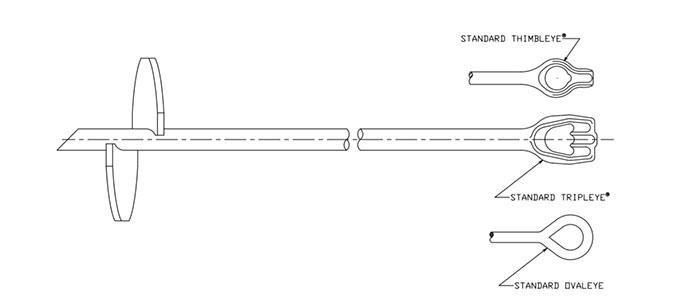
- Helical plate design—the spiral blade at the bottom enables the anchor to screw into the ground. It enhances grip and load-bearing capacity by compacting soil as it enters. It is ideal for soft and firm soils.
- Manual installation—the anchor installs by inserting a rod or bar through the eye and turning manually. It reduces the need for powered equipment like wrenches. It is perfect for remote areas.
- Forged eye or thimble head—the top end features a closed-loop eye or thimble for lever insertion during installation and guy wire attachment after anchoring. This provides a secure and corrosion-resistant connection point.
- High-tensile steel construction—the anchor consists of durable steel to withstand heavy tension and environmental stress. It is often hot-dip galvanized for superior rust and corrosion resistance.
- Strong load resistance—the anchor is also able to resist pull-out forces to ensure stable anchorage under wind pressure, line tension, and structural shifts.
- Reusability and portability—no wrench screw anchors are easy to remove and reinstall to reduce waste. They are also lightweight and transportable by hand, making them ideal for areas without vehicle access.
Common types of non-wrench screw anchors
Single helix no wrench screw anchor
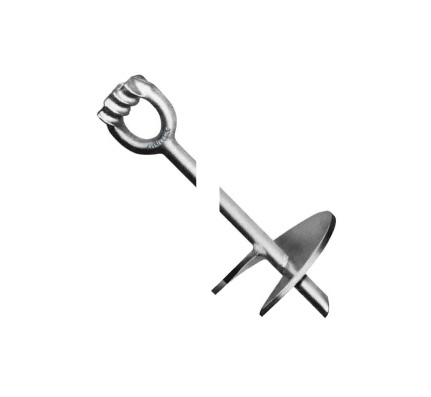
This is the most basic and commonly used type that features a single helical plate welded to a steel shaft. It is ideal for light and medium loads and firm and cohesive soils like clay. It is easy to install, has enough holding power for standard guying needs, and is cost-effective.
Double helix no-wrench screw anchor
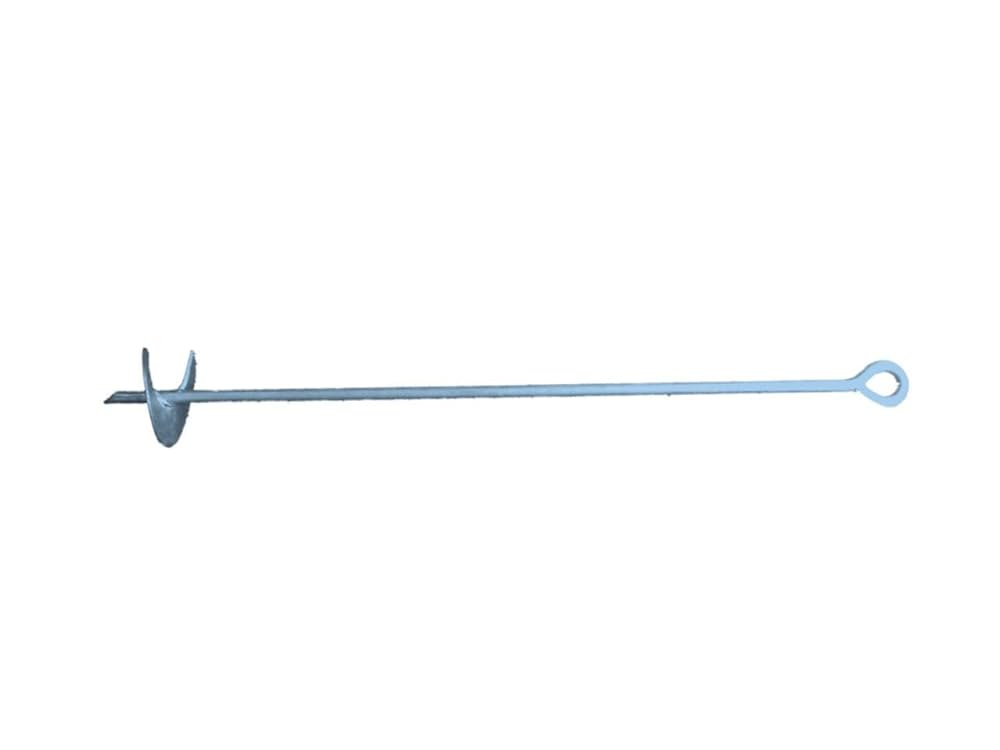
This has two helical plates spaced along the shaft where the extra helix increases holding strength and grip in the soil. It is best for loose or sandy soils and higher load requirements. It provides greater resistance to pull-out and improves stability in low-density soil conditions.
Thimble eye anchors
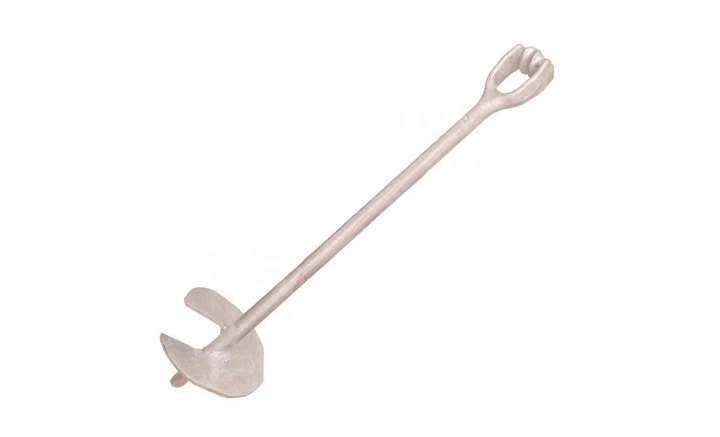
These anchors feature a thimble-shaped eye at the top, which offers a smoother cable connection and reduces wear on guy wires. It is best for high-tension lines and situations where guy wires may move or shift. The anchor prevents cable fraying, extends the lifespan of attached components, and allows more secure and stable guy attachments.
Drop-forged eye no wrench screw anchor
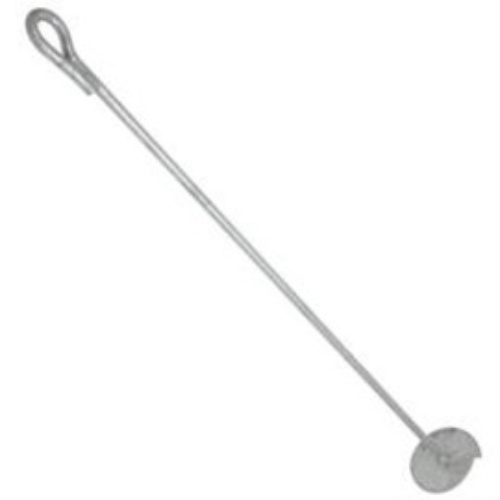
This uses a drop-forged steel eye that makes it strong and durable. Galvanization for corrosion protection is ideal for permanent installations and heavy-duty utility projects. The anchors provide superior strength and reliability, withstand high wind or seismic activity, and are ideal for long-term anchoring.
Rock- or hard-soil-adapted screw anchors
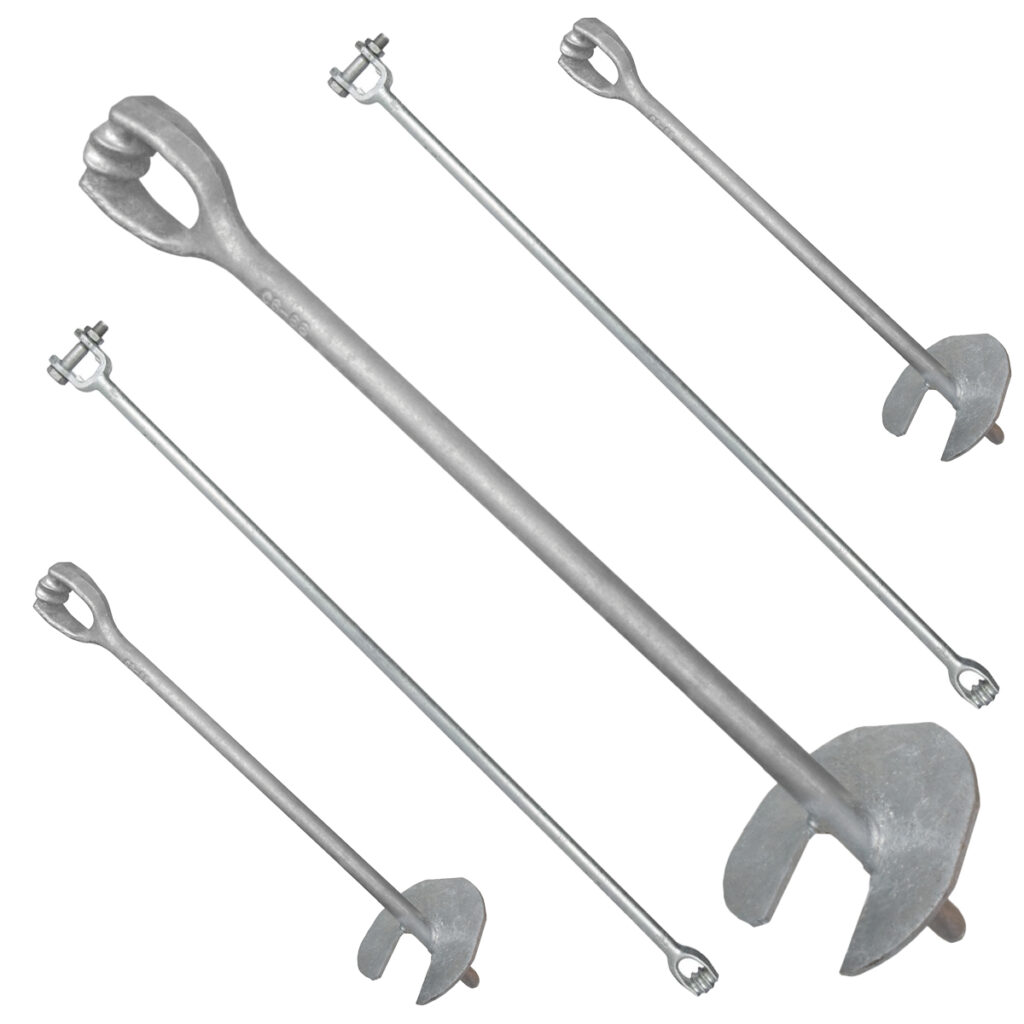
These anchors are specially reinforced screw anchors for semi-rocky terrain where helix designs would fail. They are best for stony or compacted soil environments and terrain with shallow bedrock. These anchors have reinforced blades and increased penetration and holding power in tough conditions.
Design and materials of a no-wrench screw anchor
Wrench screw anchors have specific designs and material compositions to deliver holding power, durability, and ease of installation. The performance, durability, and safety of no-wrench screw anchors depend on the materials used in their construction. The design of the anchor allows the anchor to resist uplift and lateral movement, and the steel composition gives it the toughness to survive in a variety of soils and climates. Here are the common materials for the anchors and their importance.
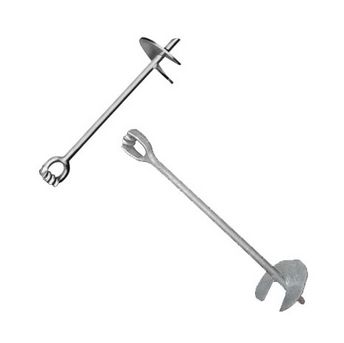
- Carbon steel—most no-wrench screw anchors are from high-strength carbon steel that provides a balance of strength, ductility, and cost-efficiency. It provides the tensile strength needed to resist pull-out forces from guy wires and withstand impact and stress loads during installation and operation.
- Hot-dip galvanized coating—this includes coating the anchors with zinc through hot-dip galvanization. This involves dipping the steel anchor in molten zinc to form a rust-resistant outer layer. It prevents corrosion in wet or acidic soils, extends anchor life, and meets utility industry standards for long-term durability.
- Forged steel—the eye or thimble head of the anchor often has a drop-forged from alloy or carbon steel to enhance toughness and impact resistance. It provides greatest strength, ensures the eye won’t deform, and allows safe attachment of guy wires under dynamic loads.
- Optional treatments—in some environments, anchors may receive extra surface treatments like epoxy coating for enhanced chemical resistance, polymer coatings, and stainless-steel variants.
- High-strength low-alloy steel—this provides a better strength-to-weight ratio and some corrosion resistance. This is common for anchors used in permanent utility installations.
Screw-in ground anchors in renewable energy projects
Wrench screw anchors are crucial components in renewable energy projects, providing cost-effective and efficient anchoring solutions that support the rapid deployment of solar, wind, and off-grid systems. Their roles in scaling renewable energy access are as discussed below.
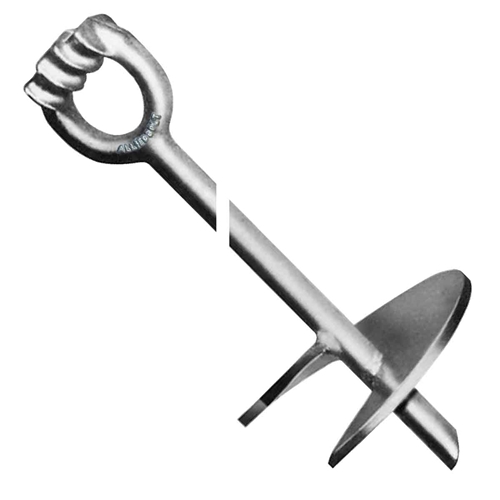
- Securing utility poles and transmission lines—electricity generated from solar and wind needs to be transported across vast and rural areas. No-wrench screw anchors stabilize poles carrying overhead transmission lines, anchor guy wires, and provide strong ground resistance without the need for concrete foundations.
- Wind turbine guying systems—utility pole anchors are ideal for quick anchoring of guy wires, withstanding rotational and vibrational loads, and reusability.
- Off-grid solar installations—many solar projects in developing regions involve solar panel arrays, microgrids, and battery banks. Wrench screw anchors anchor poles and brackets, serve as ground supports for solar-powered streetlights, and reduce the need for heavy machinery.
- Modular renewable installations—these include disaster relief energy setups, portable EV charging units, and seasonal solar microgrids. The anchors are reusable, easy to remove without damage, and ideal for temporary anchoring.
- Environmentally friendly ground anchoring—no wrench screw anchors need minimal soil disturbance, do not need excavation, and leave a small ecological footprint.
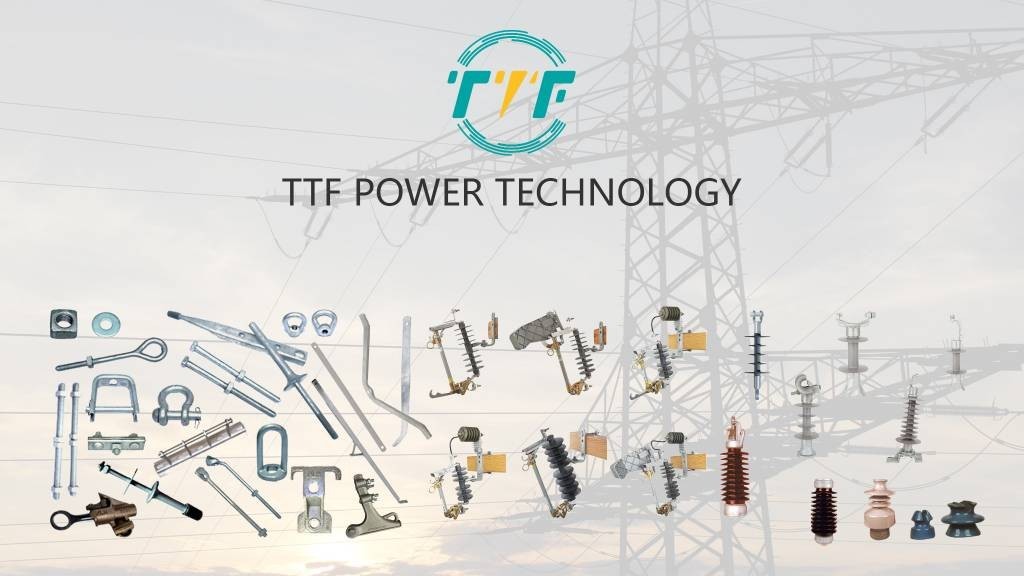
Best practices for no-wrench screw anchors
No wrench screw Anchors are crucial in power distribution and renewable energy infrastructure due to their versatility and strong holding capacity. It is important to follow specific best practices during section, installation, and maintenance. Following best practices helps deliver greatest strength, reliability, and lifespan, which makes them dependable for renewable energy projects and utility infrastructure. These practices include choosing anchor type based on soil composition, screwing in manually, aligning the head with the guy wire direction, and matching anchor length and blade to load requirements. It also includes using galvanized or coated anchors, testing pull-out resistance, and inspecting periodically for rust or movement. These will help ensure the stability and lifespan of the anchors in power line infrastructure and renewable energy projects.

